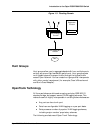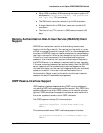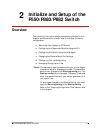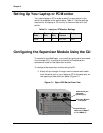
1-24
Chapter 1
Cajun P550R/P880/P882 Switch User Guide
Global Disable You can globally disable Spanning Tree on all three switches, thus
preventing any switch port from participating in Spanning Tree.
This is only recommended in a very controlled environment where
there is no possibility of a loop being placed in the network.
PORT SETTINGS
You can use the “Bridge Ports” option to adjust link costs and
priorities per IEEE802.1D. You can also disable Spanning Tree
per-port via this option. If you disable Spanning Tree per port,
IEEE802.1D definitions are strictly followed. This means that BPDUs
are not sent, incoming BPDUs are not processed, and incoming
packets are not forwarded. The port is disabled at Layer 2. You can
also set the port to Spanning Tree disable on a port if you do not
want that port to “Participate”. The port is then put directly into
Forwarding State: meaning BPDUs cannot be sent out the port,
incoming BPDUs cannot be processed, and received traffic can still
be forwarded.
SPANNING TREE DESIGN
Avaya recommends that you consider the following standard
IEEE802.1D Guidelines when you design your network, no matter
which Spanning Tree mode you decide to use:
■ Assure center switches can be forced to be root bridges. For
Per-VLAN Spanning Tree, the function of root bridge can be
shared among several center switches
■ When using standard timers assure the depth of the tree does
not exceed 7 bridges when a default bridge timer is used
■ Enable FAST START on all ports that contain IPX and DNS
clients.


















